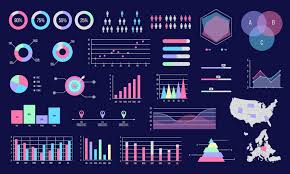PyTorch Image Captioning: A Step-by-Step Guide
Have you ever wondered how AI can describe what’s in a photo? PyTorch image captioning makes this possible by combining computer vision and natural language processing. In image captioning, a model generates a natural-language description for a given image. This technology has rapidly advanced, enabling applications in accessibility (automatically generating alt-text for the visually impaired), e-commerce (auto-captioning product images), and social media. In this guide, we’ll walk through building an image captioning system using PyTorch, covering everything from setup to inference.
What Is Image Captioning? (AI Image Description)
Image captioning—also known as AI image description—is the task of automatically generating a textual summary of an image’s content. For example, a captioning model might look at a photo of a beach and output: “A family walking on the beach at sunset.” It lies at the intersection of computer vision and natural language processing (NLP): the model must “see” the image and then produce coherent text.
Definition
Image captioning uses machine learning to convert pixels into meaningful sentences.
Applications
This technology enhances:
- Accessibility: Providing alt text for users with vision impairments.
- Search & Metadata: Improving image indexing in search engines.
- Content Creation: Automatically generating social media or product descriptions.
By enabling machines to describe images in human-like language, image captioning improves communication, searchability, and user experience across digital platforms.
Why Choose PyTorch for Image Captioning? (PyTorch Tutorial)
PyTorch is a leading deep learning framework known for its flexibility and ease of use, especially in research and prototyping. Its Pythonic, imperative programming style makes it intuitive—code runs line-by-line, simplifying debugging and experimentation.
Advantages of PyTorch
- Ease of Use: PyTorch feels natural to Python developers with readable, concise APIs.
- Performance: It supports GPU acceleration with efficient C++ backends.
- Research-Friendly: Most academic papers and tutorials prefer PyTorch for its flexibility and dynamic computation graphs.
PyTorch vs. TensorFlow
While TensorFlow traditionally used static graphs, PyTorch allows you to modify the model dynamically, making it a preferred choice for custom architectures and experimental designs.
If you’re building an image captioning model, PyTorch provides a more agile and intuitive development experience.
Prerequisites (Image Captioning Setup)
Before you begin your PyTorch image captioning project, make sure you have the following:
Technical Requirements
- Hardware: A modern GPU (e.g., NVIDIA CUDA) is highly recommended. Aim for at least 8–16 GB of RAM and a GPU with several GB of memory.
- Software: Use Python 3.7+ and a virtual environment (venv or Conda).
- Dependencies: Install PyTorch, TorchVision, NumPy, Pillow, and other necessary libraries.
Skills Needed
- Proficiency in Python.
- Understanding of deep learning, especially CNNs and RNNs.
- Familiarity with PyTorch syntax and training loops.
These PyTorch prerequisites ensure a smooth development and training process.
Step 1: Setting Up the Environment (Install PyTorch)
Start by setting up your development environment.
Installation
bash
CopyEdit
python3 -m venv caption-env
source caption-env/bin/activate
pip install torch torchvision numpy pillow matplotlib
Check your GPU support with:
python
CopyEdit
import torch
print(torch.cuda.is_available())
Using a clean, isolated environment ensures that dependencies don’t conflict and everything runs smoothly.
Step 2: Preparing the Dataset (Image Captioning Dataset)
To train your image captioning model, you need a dataset of image-caption pairs.
Dataset Selection
Recommended datasets:
- MS COCO: ~123,000 images with 5 captions each.
- Flickr8k/Flickr30k: Smaller, good for beginners.
Data Preprocessing
- Images: Resize (e.g., 224×224), convert to tensors, and normalize.
- Captions: Tokenize, lowercase, remove rare words, and map to indices. Add special tokens like <SOS> and <EOS>.
- DataLoader: Use PyTorch’s Dataset and DataLoader classes for batching and shuffling.
Good preprocessing improves model performance and training efficiency.
Step 3: Building the Model (PyTorch Model Architecture)
An image captioning model typically includes:
CNN Encoder
Use a pretrained model like ResNet-50, remove its final classification layer, and extract a feature vector.
python
CopyEdit
cnn = torchvision.models.resnet50(pretrained=True)
modules = list(cnn.children())[:-1]
cnn = nn.Sequential(*modules)
RNN Decoder
Use an LSTM or GRU to generate captions word-by-word from image features.
python
CopyEdit
class DecoderRNN(nn.Module):
def __init__(self, embed_size, hidden_size, vocab_size):
…
This image captioning model transforms image features into a sequence of descriptive words.
Step 4: Training the Model (Train PyTorch Model)
Train the model using:
Training Process
- Loss Function: Cross-entropy loss with teacher forcing.
- Optimizer: Adam or SGD.
- Epochs: Train for multiple passes over the dataset.
Evaluation Metrics
- BLEU
- METEOR
- CIDEr
Regularly evaluate your model on a validation set to monitor progress and prevent overfitting.
Step 5: Generating Captions (Image Captioning Inference)
Once the model is trained, use it for caption generation:
Inference
- Encode the input image.
- Use <SOS> token and loop through the decoder.
- Predict the next word until <EOS> or max length.
Optimization Tips
- Beam Search: Improves output quality by exploring multiple word paths.
- Attention Mechanism: Focuses on specific regions of the image for each word, producing more accurate captions.
Using these methods, your model will generate human-like, relevant captions for new images.
Conclusion
In this professional guide, we explored how to build an image captioning model using PyTorch, from dataset preparation to inference. We covered:
- What image captioning is and why it matters.
- Why PyTorch is the best framework for this task.
- Step-by-step instructions for setup, model building, and training.
- Techniques to improve caption generation quality.
Image captioning has wide applications in accessibility, content creation, and e-commerce. For example, in online retail, auto-captioning product photos can significantly boost SEO and engagement.
If you’re interested in how this technology can increase sales, check out this guide on AI image captioning for e-commerce.Start experimenting, train your own models, and share your results or questions in the comments below. Your journey into AI image description with PyTorch begins now!
Stay connected with us on HERE AND NOW AI & on

